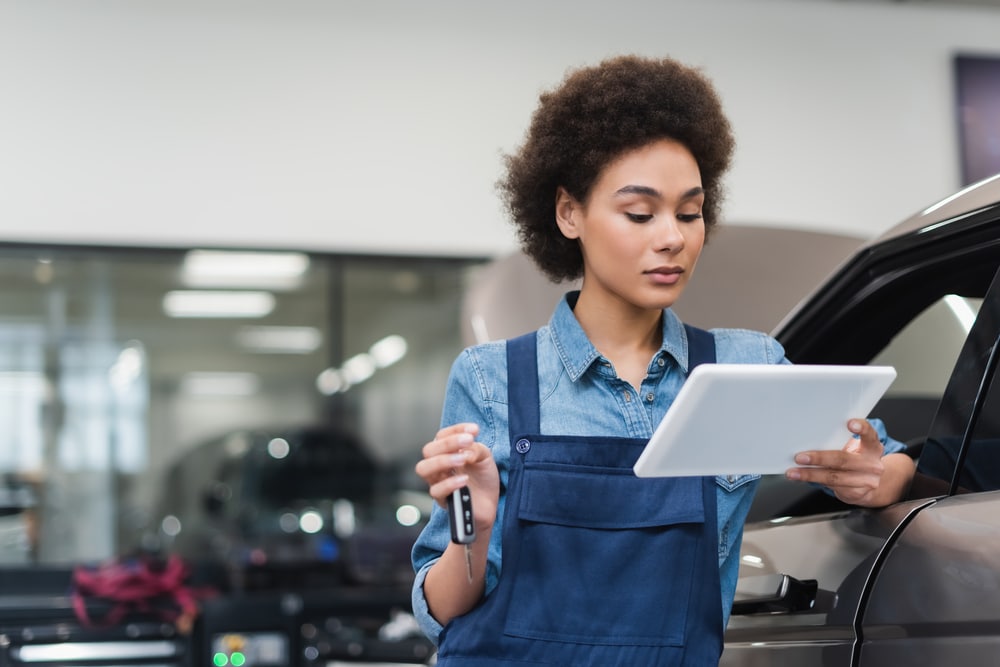Advanced Driver Assistance Systems (ADAS) play a major role in keeping drivers safe in modern automobiles. Many of the cameras, sensors, and radar used by these systems are installed directly on your windshield. Therefore, even a slight alignment change during windshield replacement can interfere with these systems. For this reason, it’s crucial to have the Best ADAS calibration service near Los Angeles when having your windshield replaced. Let’s discuss what ADAS calibration is, why it’s important, and how to ensure proper execution.
What Is ADAS and Why Does It Matter?
ADAS stands for Advanced Driver Assistance Systems. These technologies are built into newer cars and help with things like lane-keeping, adaptive cruise control, and emergency braking. They’re designed to make driving easier and safer. But they rely on precise data from cameras and sensors—especially the ones near or on your windshield.
If these sensors are even slightly off, your car might not respond the way it should in a critical moment. That’s why recalibrating the system after a windshield replacement isn’t optional—it’s a must for safety.
What Happens During Windshield Replacement?
When your windshield is removed and replaced, the factory positioning of your camera and sensors can shift. Even a few millimeters can throw the system off. The adhesive used during installation also takes time to cure, and vibrations or minor adjustments during that time can affect alignment. So, getting everything back to factory specs is critical before trusting your ADAS to do its job.
Static vs. Dynamic Calibration: What’s the Difference?
There are two main types of ADAS calibration: static and dynamic. Static calibration is done in a controlled environment, like a shop, using special targets and tools to realign the sensors. Dynamic calibration, on the other hand, involves driving the car on the road so the system can self-adjust using real-time data.
Some vehicles need only one of these; others might need both. It depends on the make and model of your car. A professional technician will know what’s required for your specific setup.
Who Should Handle the Calibration?
Not every shop is qualified to handle ADAS calibration. It requires specialized equipment and up-to-date knowledge of vehicle systems. Certified technicians have the tools and training to do the job right. Always ask your repair shop if they’re trained to calibrate ADAS and whether they’ve worked on your car’s make and model before.
If your shop can’t do it, make sure they partner with a facility that can. Don’t skip it—an improperly calibrated system could put you at risk on the road.
Timing Is Everything
You might think it’s okay to drive around for a few days before getting your ADAS recalibrated, but it’s not a good idea. From the moment your windshield is replaced, the sensors may be off. That means features like lane assist or forward collision warning could be compromised.
Make sure calibration happens as part of the windshield replacement process or immediately after. The sooner it’s done, the safer you’ll be behind the wheel.
Warning Signs That Your ADAS Is Off
Sometimes, your car will alert you if something’s wrong—maybe a warning light on the dash or a message saying a system is unavailable. But not all issues are obvious. If you notice your lane assist nudging you at the wrong times, or your adaptive cruise not reacting properly to traffic, those could be signs your calibration is off.
Trust your instincts. If something feels different after a windshield replacement, don’t ignore it. Head back to the shop and ask them to recheck everything.
How Long Does Calibration Take?
The time it takes depends on your vehicle and the type of calibration needed. Static calibration might take an hour or two, while dynamic calibration depends on driving conditions and speed. If both are needed, you’re looking at a few hours total.
The good news? Most professional shops are efficient and can get you back on the road the same day. It’s worth the wait to have peace of mind knowing your safety systems are working as they should.
Cost vs. Value
Some drivers hesitate to get ADAS calibration because of the added cost. It’s true—it’s not always cheap. But compare that to the cost of an accident caused by faulty sensors. When you think about it that way, it’s not just a service; it’s an investment in your safety.
Ask your insurance company if they cover ADAS calibration. Many policies do, especially if it’s part of a windshield replacement claim.
Don’t Trust DIY or Quick Fixes
There are plenty of how-to videos out there that make it seem like you can handle ADAS calibration at home. Don’t fall for it. Without the proper tools and knowledge, you can make things worse. And if your system doesn’t work correctly, you might not know until it’s too late.
This is one of those jobs best left to professionals. Trust a shop that specializes in ADAS calibration and uses OEM-approved procedures.
Final Thought:
Windshield replacement might seem simple, but it can impact some of your car’s most important safety systems. Accurate ADAS calibration isn’t a luxury—it’s a requirement. Make sure it’s done properly by a trained professional, ideally right after the windshield is replaced. A small step like this can make a huge difference when it comes to keeping you and your passengers safe on the road.
